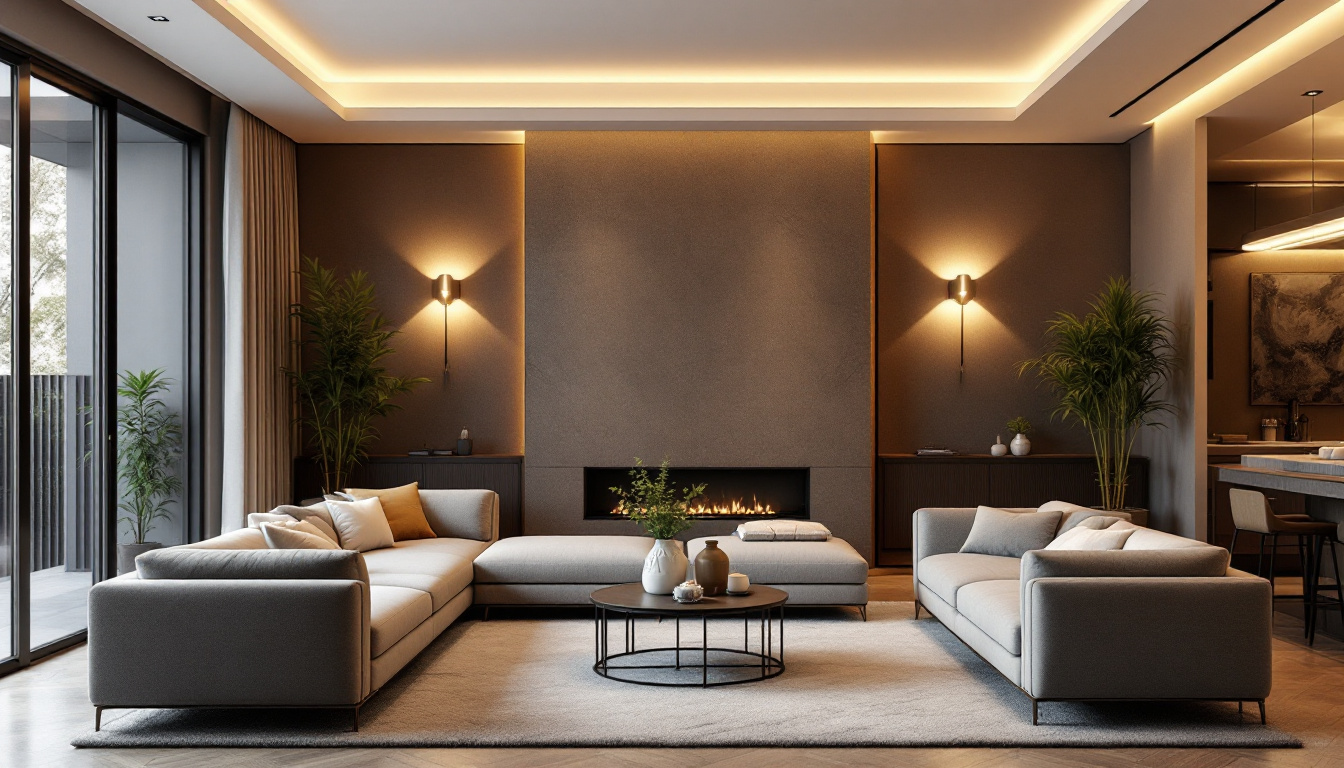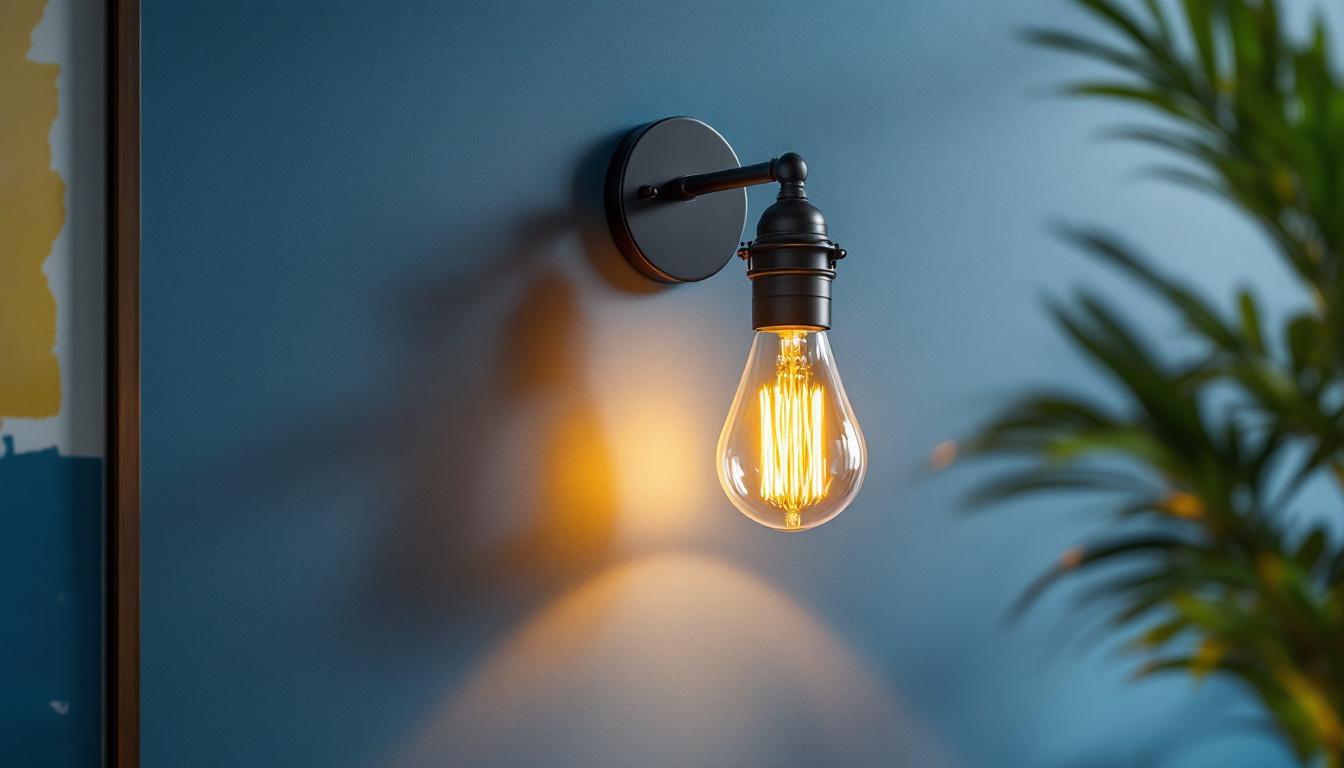
Lighting design plays a crucial role in enhancing the aesthetics and functionality of a space. While can lights have long been a staple in residential and commercial lighting, there are numerous alternatives that can provide unique visual appeal and improved efficiency. This article explores various options, techniques, and insider secrets that lighting contractors can employ to master the art of illumination without relying solely on can lights.
Can lights, or recessed lighting, have been a popular choice for many years due to their sleek appearance and ability to blend into ceilings. However, they come with certain limitations that may not suit every project. For instance, they can create uneven lighting, leading to dark spots in a room. Additionally, the installation process can be cumbersome, particularly in existing structures where ceiling access is limited.
Moreover, can lights often require specific ceiling heights for optimal performance. In spaces with lower ceilings, they may not provide adequate illumination or could create an oppressive atmosphere. As a result, exploring alternative lighting solutions can enhance both the functionality and aesthetic appeal of a space.
Another important consideration is the heat generated by can lights. Traditional incandescent bulbs can produce a significant amount of heat, which not only affects energy efficiency but can also lead to increased cooling costs in warmer months. This is particularly relevant in areas like attics or small rooms where heat buildup can become uncomfortable. Switching to LED options can mitigate this issue, but it’s worth noting that LED can lights may have their own set of challenges, such as compatibility with dimmer switches and potential flickering.
Furthermore, the aesthetic impact of can lights should not be overlooked. While they provide a clean and modern look, their installation can disrupt the visual flow of a room, especially if the fixtures are not evenly spaced or aligned. Homeowners and designers may find that pendant lights, chandeliers, or wall sconces offer more character and can serve as focal points, enhancing the overall design. These alternatives can also provide layered lighting, which is essential for creating a warm and inviting atmosphere in any space.
With the limitations of can lights in mind, several alternative lighting solutions can be considered. These options not only provide different visual effects but can also enhance the overall ambiance of a room. Below are some popular alternatives that lighting contractors should consider.
Pendant lights are an excellent alternative to can lights, especially in dining areas, kitchens, and entryways. They come in various styles, sizes, and materials, allowing for a wide range of design possibilities. By hanging pendant lights at different heights, contractors can create a dynamic visual effect that draws the eye and adds character to a space.
Moreover, pendant lights can serve as focal points in a room. For instance, a large, statement pendant can become the centerpiece of a dining room, while smaller pendants can be grouped together to create a more intimate setting. This versatility makes pendant lighting an attractive option for both residential and commercial projects. Additionally, the use of colored or patterned glass can introduce an artistic flair, casting intriguing shadows and patterns on surrounding surfaces, further enhancing the room’s overall aesthetic.
Wall sconces offer a stylish way to illuminate spaces while adding depth and dimension to walls. They can be used to highlight artwork, architectural features, or simply to provide ambient lighting. By strategically placing sconces at eye level, contractors can create a warm and inviting atmosphere.
Additionally, wall sconces come in various designs, from modern to traditional, allowing contractors to match the lighting to the overall style of the space. They can also be used in conjunction with other lighting sources to create layered lighting, enhancing both functionality and aesthetics. For instance, using sconces alongside floor lamps or table lamps can create a cohesive lighting scheme that balances both task and ambient lighting. Furthermore, incorporating dimmable sconces allows for greater control over the mood of the room, making it easy to transition from bright, functional lighting to a softer, more relaxing glow for evening gatherings.
Track lighting is another versatile option that allows for adjustable illumination. This type of lighting consists of a track with multiple light fixtures that can be repositioned to direct light where it is needed most. This flexibility makes track lighting ideal for spaces that require versatile lighting solutions, such as galleries or retail environments.
Furthermore, track lighting can be customized with different bulb types and styles, enabling contractors to create a unique look that complements the overall design of the space. By using dimmable bulbs, contractors can also provide clients with the ability to adjust the lighting intensity according to their needs. In addition, track lighting can be integrated with smart home systems, allowing users to control the lighting through their smartphones or voice commands, making it a practical choice for tech-savvy homeowners. This adaptability not only enhances convenience but also supports energy efficiency by allowing users to turn off lights in unoccupied areas or adjust brightness based on the time of day.
Beyond selecting the right fixtures, lighting contractors can employ innovative techniques to enhance the effectiveness of their designs. These techniques can help create a more cohesive and visually appealing lighting scheme.
Layered lighting is a fundamental principle in effective lighting design. By combining ambient, task, and accent lighting, contractors can create a well-balanced lighting scheme that serves various functions. Ambient lighting provides general illumination, while task lighting focuses on specific areas where activities are performed. Accent lighting, on the other hand, highlights particular features or objects within a space.
For example, in a living room, ambient lighting can be provided by ceiling fixtures, while table lamps serve as task lighting for reading. Accent lighting can be achieved through wall sconces or spotlights that draw attention to artwork or architectural details. This approach not only enhances functionality but also adds depth and interest to the overall design.
Incorporating natural light into a lighting design can significantly enhance the ambiance of a space. Lighting contractors should consider the placement of windows, skylights, and other openings to maximize daylight exposure. By strategically positioning fixtures to complement natural light, contractors can create a harmonious balance between artificial and natural illumination.
Additionally, using reflective surfaces, such as mirrors or glossy finishes, can help bounce natural light around a room, further enhancing brightness and warmth. This approach not only reduces the need for artificial lighting during the day but also contributes to energy efficiency.
As technology continues to advance, smart lighting solutions have become increasingly popular among homeowners and businesses alike. These systems allow for remote control of lighting through smartphones or voice-activated devices, providing convenience and flexibility.
Lighting contractors can leverage smart technology to create customized lighting scenes that cater to different activities or moods. For instance, a “movie night” scene can dim the lights and create a cozy atmosphere, while a “work mode” scene can provide bright, focused illumination. By incorporating smart lighting solutions, contractors can offer clients enhanced control over their lighting environments.
The choice of light bulbs can significantly impact the quality of illumination and energy efficiency in a space. Lighting contractors should be well-versed in the various types of bulbs available and their respective applications.
LED bulbs have gained popularity due to their energy efficiency and long lifespan. They consume significantly less energy compared to traditional incandescent bulbs, making them an environmentally friendly choice. Additionally, LED bulbs are available in various color temperatures, allowing contractors to select the appropriate hue for a given space.
Moreover, LED technology has advanced to the point where these bulbs can now be dimmed and used in a variety of fixtures, including pendant lights and wall sconces. This versatility makes them an ideal choice for contractors looking to create a sustainable and visually appealing lighting design.
Compact fluorescent lamps (CFLs) are another energy-efficient option that can be used in various fixtures. While they are not as popular as LED bulbs, CFLs offer a good balance between energy savings and initial cost. They are available in different shapes and sizes, making them suitable for a range of applications.
However, it is essential to note that CFLs contain small amounts of mercury, requiring proper disposal. Contractors should educate clients about the importance of recycling these bulbs to minimize environmental impact.
While incandescent bulbs are less energy-efficient, they still have their place in certain lighting designs. Their warm glow and excellent color rendering make them a popular choice for creating a cozy atmosphere. In spaces where ambiance is a priority, contractors may opt for incandescent bulbs, particularly in fixtures where dimming is desired.
However, it is crucial to balance the use of incandescent bulbs with energy-efficient options to ensure that the overall lighting design remains sustainable.
As the demand for innovative and aesthetically pleasing lighting solutions continues to grow, lighting contractors must stay informed about the latest trends and alternatives to traditional can lights. By exploring options such as pendant lighting, wall sconces, and track lighting, contractors can create dynamic and functional spaces that meet the diverse needs of their clients.
Moreover, employing techniques like layered lighting, maximizing natural light, and incorporating smart technology can elevate the overall design and enhance the user experience. Understanding the nuances of different light bulbs and their applications will further empower contractors to make informed decisions that align with their clients’ preferences and sustainability goals.
In a rapidly evolving industry, staying ahead of the curve and mastering these alternative lighting solutions will not only benefit contractors but also lead to satisfied clients and successful projects. Embracing creativity and innovation in lighting design will ultimately transform spaces and enhance the quality of life for those who inhabit them.
Ready to elevate your lighting designs with innovative solutions and unparalleled value? At LumenWholesale, we provide lighting contractors with the highest quality, spec-grade lighting products at the best wholesale prices. Say goodbye to local distributor markups and hello to a vast selection of reliable lighting options that meet the strictest industry standards. With free shipping on bulk orders, you can stock up on premium lighting without any hidden fees. Transform your projects and delight your clients by choosing Wholesale Lighting at the Best Value with LumenWholesale.

Discover the essential guidelines for lighting contractors with our comprehensive guide on industrial wall sconces.

Discover essential insights into lighting diffusers that every lighting contractor should know.

Discover how track lighting tracks can significantly enhance safety in lighting installations.

Discover the essential checklist for contractors installing solar light outdoor posts.